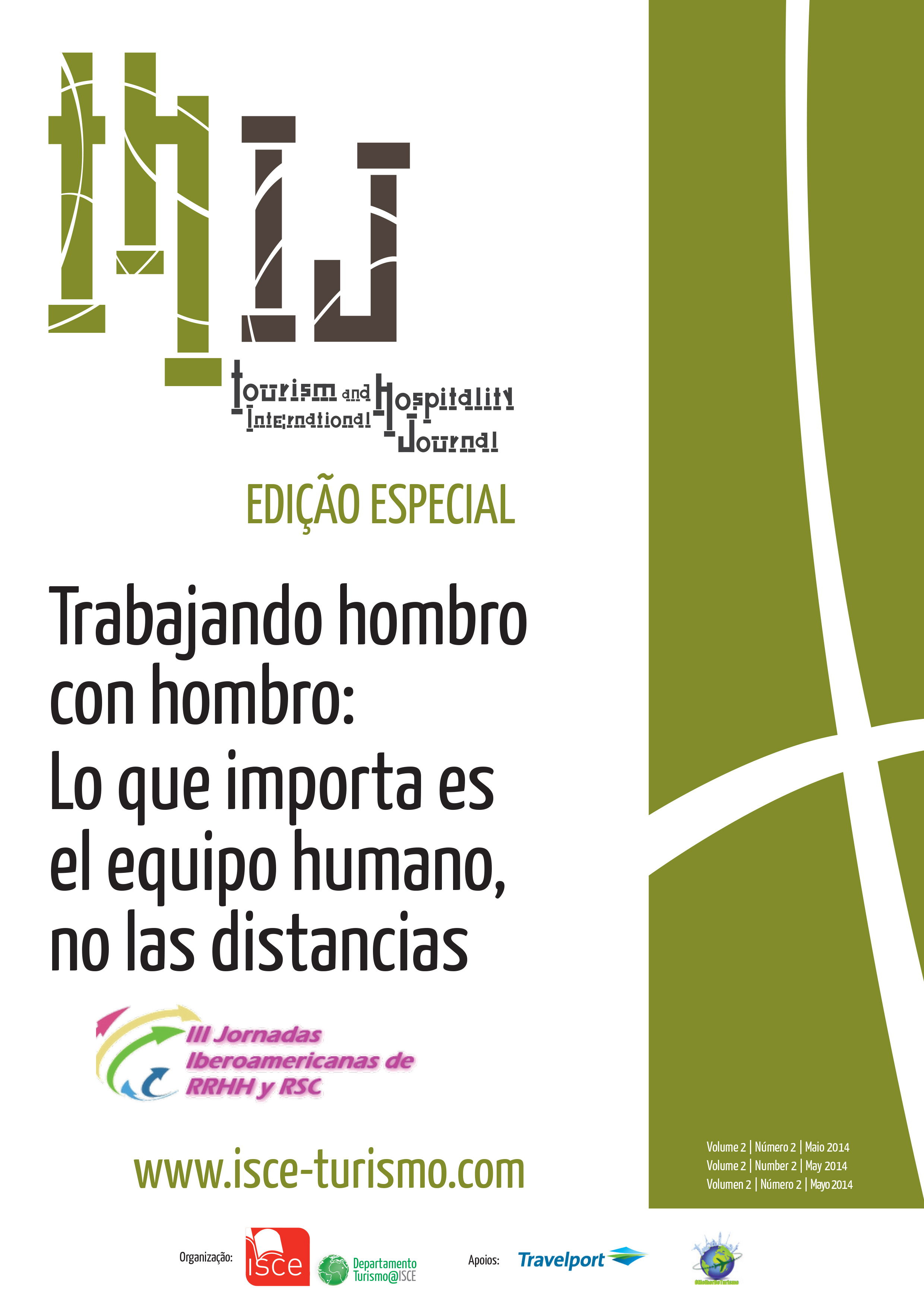The CRM: A successful framework for a strategic tool in hotel management
DOI:
https://doi.org/10.57883/thij2(2)2014.30143Keywords:
CRM, Hotel industry, Cloud computing, Strategic capabilities, Successful structureAbstract
The availability of Customer Management Systems in the hospitality industry has been traditionally been viewed as a huge investment and effort, that the larger chains are only able to meet; although, new technological advances are allowing for the restructuring of the operations through the use of a new software model, in which the data are stored in the cloud and outsourcing or subcontracting of services can be offered as an alternative. The present research to establish the technological framework, study analyzes and collects the latest marketing trends, views of experts in companies and organizations of tourism in Spain and the latest technological advances that exist in the market to jointly translate the structuring of a successful CRM tool, allowing professionals from the sector to integrate all the knowledge gained from its customers, beginning to offer "value" both individual and collective. The results of the study, gets the CRM can be a tool that is beneficial to the management of the hotel sector, but its success lies in its structure.
References
Band, W. (2012). The Forrester Wave: CRM Suites for Mid Sized Organizatiers. Cambridge: MA: Forrester Research, Inc.
Bauer, C., Greve, G. & Gregor, H. (2011). Online targeting und controlling: Grundlagen-Anwendungsfelder–Praxisbeispiele. Wiesbaden (Alemania): Springer Gabler.
Becker, J. U., Greve, G. & Albers, S. (2009). The impact of technological and organisational implementation of CRM on customer acquisition, maintenance, and retention. International Journal of Research in Marketing, 26, 207-215.
Beijerse, R.P. (1999). Questions in KM: defining and conceptualising a phenomenon. Journal of Knowledge Management, 3(2), 94-109.
Boulding, W., Staelin, R., Ehret, M. & Johnston, W. J. (2005). Customer relationship management roadmap: What is known, potential pitfalls, and where to go. Journal of Marketing, 69, 155-166.
Chalmeta, R. (2006). Methodology for customer relationship management. The Journal of Systems and Software, 79, 1015-1024.
Chang, H. H. (2007). Critical factors and benefits in the implementation of customer relationship management. Total Quality Management, 18(5), 483-508.
Chen, I. J. & Popovich, K. (2003). Understanding customer relationship management-people, process and technology. Business Process Management Journal, 9(5), 672-688.
Chen, Q. & Chen, H.M. (2004). Exploring the success factors of eCRM strategies in practice. Journal of Database Marketing & Customer Strategy Management, 11, 333-343.
Claver, E., Pereira, J., De Juana, S. & Guerrero, A. (2004). Consecuencia de la presencia de nuevas tecnologías de la información y la comunicación en la rentabilidad, calidad, y recursos humanos de los hoteles de la Provincia de Alicante. V Congreso TURITEC, 53-70.
Clemons, E. K. & Row, M.C. (1991). Sustaining IT advantage: The role of structural differences. MIS Quarterly, 15(3), 275-292.
Clifton, R. (2009). Brands and branding (2ª edición). London: The Economist Books.
Dev, S. & Schultz, D. (2005a). Simply Siva. Marketing Management, 14(2), 36-42.
Dev, S. & Schultz, D. (2005b). A customer-focused approach can bring the current marketing mix into the 21st century. Marketing Management, 14(1), 16-22.
Foss, B., Stone, M. & Ekinci, Y. (2008). What makes for CRM system success - or failure? Database Marketing & Customer Strategy Management, 15(2), 68-78.
Garrido, A. & Padilla, A. (2012). CRM strategies in services companies: managerial recommendations for its implementation. Dirección y Organización, 46(Abril), 56-66.
Greenberg, P. (2010). The impact of CRM 2.0 on customer insight. Journal of Business & Industrial Marketing, 25(6), 410-419.
Hansotia, B. (2002). Gearing up for CRM: Antecedents to successful implementation. Journal of Database Management, 10(2), 121-132.
INE (2013). Encuesta Anual de Servicios 2012. Recuperado de http://www.ine.es.
Mendoza, L. E., Marius, A., Pérez, M. & Grimán, A. C. (2007). Critical success factors for a customer relationship management strategy. Information and Software Technology, 49, 913-945.
Piccoli, G., O’Connor, P., Capaccioli, C. & Alvarez, R. (2003). Customer relationship management: A driver for change in the structure of the US lodging industry. Cornell Hotel and Restaurant Administration Quarterly, 44(4), 61-73.
PriceWaterhouseCoopers (2006). Informe de coyuntura hotelera: situación y perspectivas del sector en España. Recuperado de http://k3.pwc.es/local/es/kc3/publicaciones.nfs.
Salojärvi, H., Sainio, L. M. & Tarkiainen, A. (2010). Organisational factors enhancing customer knowledge utilization in the management of key account relationships. Industrial Marketing Management, 39, 1395-1402.
Salvi, F. & Serra, A. (2014). New consumer behaviour: A review of research on eWOM and hotels. International Journal of Hospitality Management, 36, 41-51.
Sin, L. Y. M.; Tsé, A. C. B. & Yim F. H. K. (2005). CRM conceptualization and scale development. European Journal of Marketing, 39(11/12), 1264-1290.
Thompson, E., Goldman, M. & Mertz, S. A. (2010). Predicts 2011: CRM Enters a Three-Year Shake-Up. Stamford, CA: Gartner, Inc.
Verhoef, P. C., Reinartz, W. J. & Kraft, M. (2010). Customer engagement as a new perspective in customer management. Journal of Service Research, 13(3). 247-252.
Downloads
Published
How to Cite
Issue
Section
License
Copyright (c) 2023 This work is licensed under a Creative Commons - Attribution 4.0 International (CC BY 4.0)

This work is licensed under a Creative Commons Attribution 4.0 International License.
This work is published under the Creative Commons Attribution 4.0 International License.






